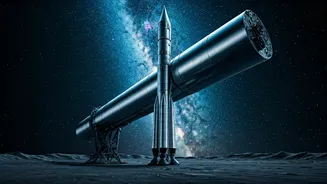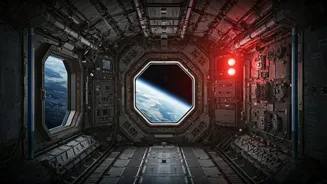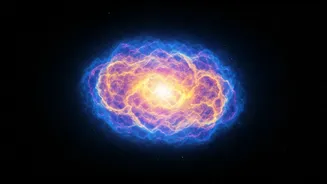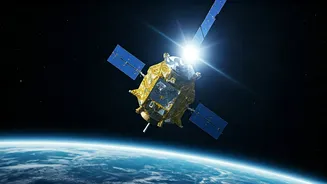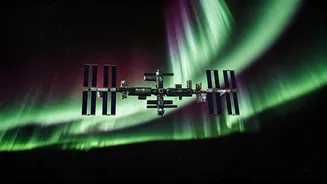Solar Storms Unleashed
Recent intense solar storms have dramatically increased auroral displays and posed potential hazards. These storms, marked by powerful coronal mass ejections
(CMEs), have a far-reaching influence, extending beyond the vibrant auroras. The effects involve energetic particles from the sun, which can disrupt technological systems and endanger astronauts in space. A significant CME forced astronauts aboard the International Space Station to seek shelter for safety, highlighting the storms' severity. The study of these solar events is crucial for space weather forecasting, helping mitigate risks and protect our technology and those exploring the cosmos.
Aurora's Cosmic Display
The auroras, also called the Northern and Southern Lights, are a mesmerizing outcome of solar flares. These radiant light shows occur when charged particles from the sun interact with the Earth's atmosphere. As these solar particles collide with gases, they create a stunning display of colors across the sky. The auroras' beauty makes them a visual treat and provides insights into the interaction between the sun and Earth's magnetosphere. The intensity and range of auroral displays are closely tied to the strength and frequency of solar storms, with stronger storms often leading to brighter and more widespread lights. The study of auroras provides vital data for monitoring space weather and understanding the effects of solar activity.
ISS and Astronauts
During these intense solar events, astronauts on the International Space Station (ISS) must take strict protective measures. Solar storms are a threat to the astronauts as they increase radiation exposure and potential health risks. To mitigate these dangers, astronauts retreat into the parts of the ISS that have the most protection. This protective area minimizes exposure to radiation from solar particles. The event also shows the importance of international cooperation in space exploration, with diverse teams working to protect human life. Monitoring space weather and issuing timely alerts are crucial parts of ensuring astronaut safety during space missions.
Supernova Insights
Recent observations provide insights into the initial stages of a supernova explosion. The James Webb Telescope may have even captured the early light from the first generation of stars in the Universe. A particular study observed an early and asymmetric blast, showing an olive-shaped explosion. This asymmetric shape sheds light on the internal dynamics and mechanisms that power these stellar cataclysms. Supernovae are crucial in distributing heavy elements throughout the cosmos, which are essential for the formation of planets. The study of supernova events provides knowledge about the lives and deaths of stars, as well as the evolution of the universe.
Searching For Life
Astronomers are actively searching for planets that might support life beyond Earth. A nearby super-Earth, named GJ 251 c, may have the potential to teach about other worlds that once supported life. Such explorations help scientists learn how to search for signs of life. The study of these exoplanets requires advanced telescopes and instruments, alongside sophisticated data analysis methods. Determining the habitability of an exoplanet requires analysis of its size, atmosphere, and distance from its star. These ongoing efforts are pivotal to answering the ultimate question: if life exists beyond our home planet.



